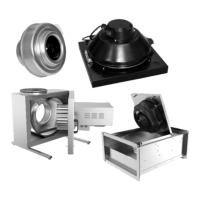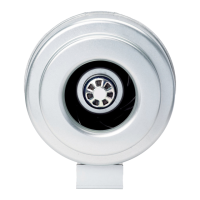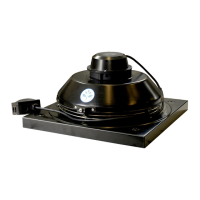50 systemair
Medium draining
• Shut off the isolating valves in the compressor-condenser section and evacuate Freon from the DX coil through the
special valve (using the evacuation equipment in accordance with the Montreal Protocol).
• Disassemblethethermostatvalveinsert.Inthecasequickcouplingsarebeingused,disconnectthem;ifnot,
unsolder the DX coil to allow its dismounting.
Maintenance
For smooth performance of the DX coil, the following operations should be carried out regularly:
• checkthesolderedjoints,
• checkthesystempressure,
• periodicallychecktheinspectionglassfortheappearanceofbubblesandhumidity,
• checkthecoolingcircuitprotectionelements–mechanicalandelectrical,
• intheeventofprolongedinterruptionofoperation,checktheperformanceofthecompressorsumpheater,
• checktheoperationoftheDXfan,
• regularlychecktheDXbladesfordustbuild-up.Dustorscalebuild-uponthebladesreducestheheatexchanger
capacity. Clean the blades at regular time intervals – approx. every 500 hours of operation.
Tocleantheblades,blowthemwithcompressedairinthedirectionoppositetotheairowdirection.
Ifsuchcleaningprovesinsufcient,disconnecttheheatexchanger,slideitoutandwashwithlow-pressurewateror
steam. Do not use high-pressure water or steam in order to avoid deforming the aluminium blades. If washing with
water, the pressure thereof must not exceed 15 bar and the jet must be directed strictly parallel to the blades. Exposure
to a water jet at an angle will damage the blades. This applies even more so to the blades at the edge, since these are
even more fragile.
Caution
Under no circumstances should you attempt to clean the blades with a hard object.
3.7.5 Droplet eliminator
Caution
See also section 3.1 General instructions.
No piping (e.g. cooling system piping, electrical cable conduits, etc.) is to be laid through the eliminator
blades in such a manner so as to spread the blades apart.
Thebladesaretobefreeofwaterscaleandothersaltbuild-up.Regularlycheckthesoilingoftheblades
(once a year), and clean or replace the eliminator if necessary.
Be sure to install a properly sized siphon on the drain pipe to collect and drain the condensate.
Instructions for the construction, installation and connection are given in section 2.3.5 – Connection of
siphon.
Correctairowdirectionisillustratedingure.
